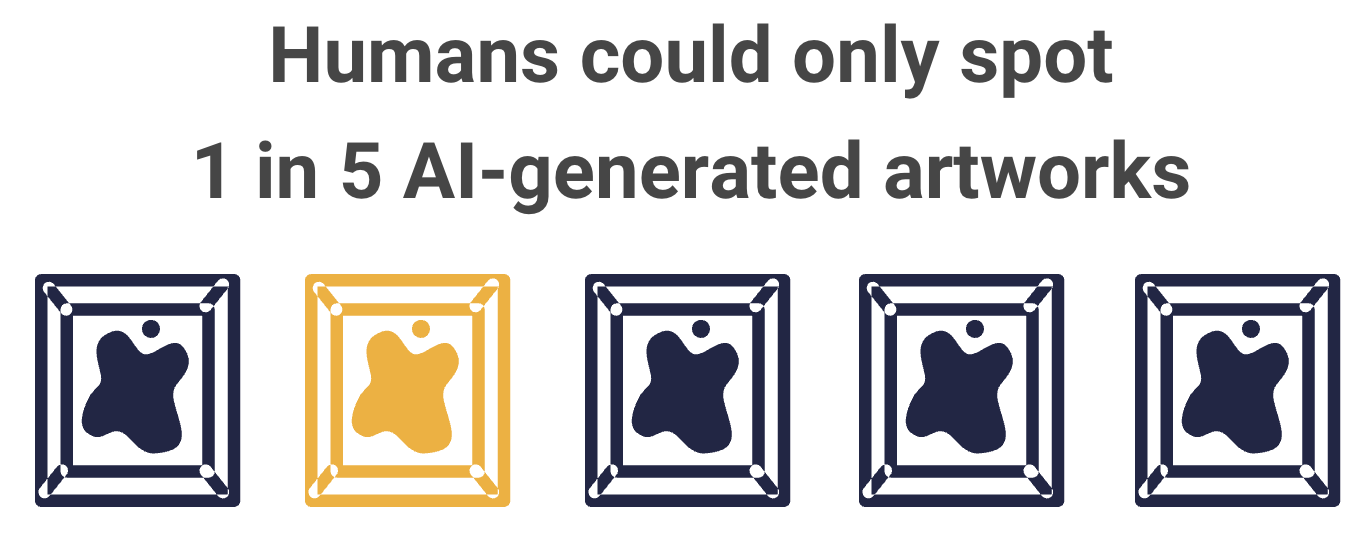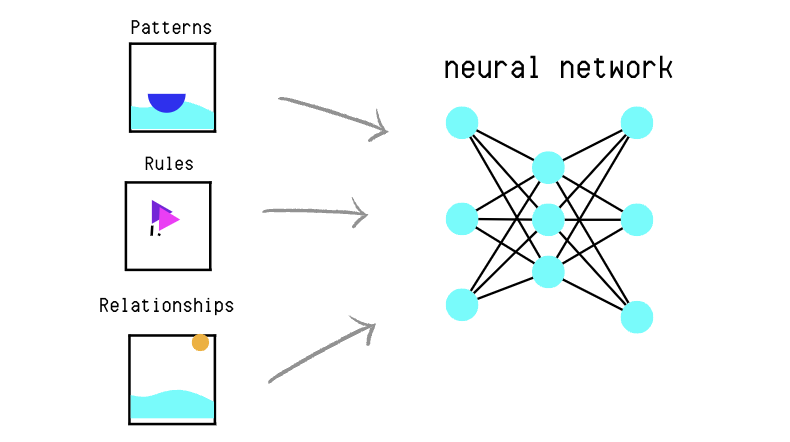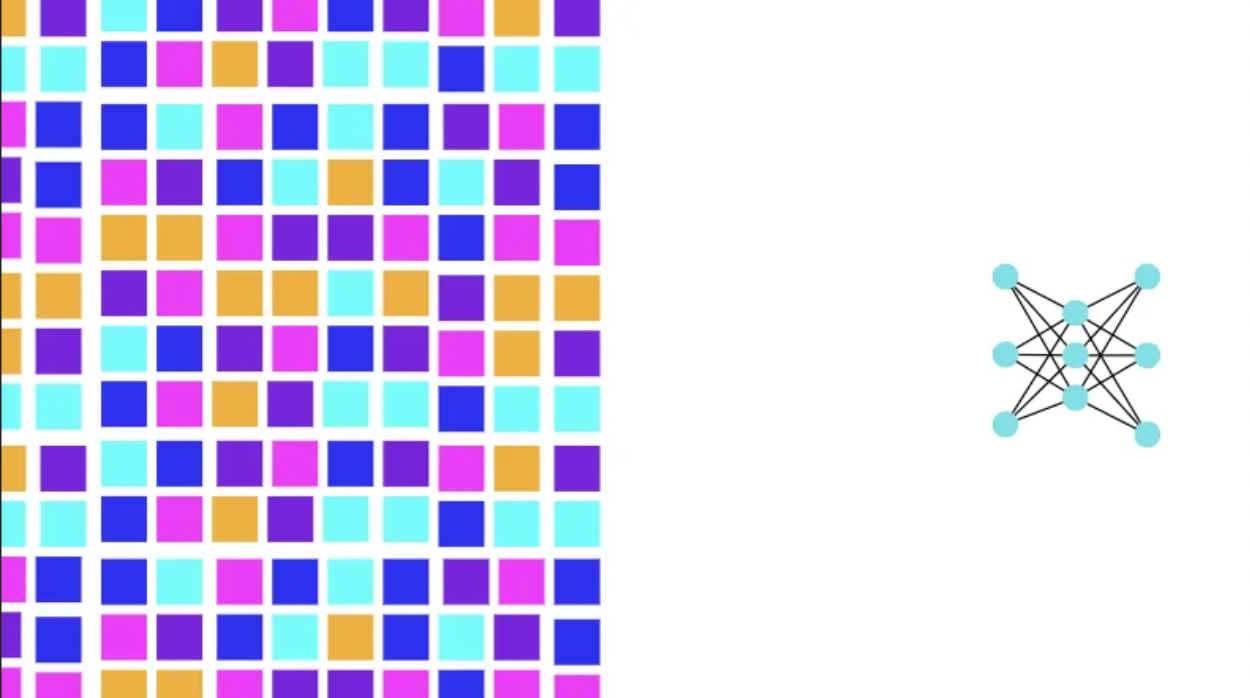Written by Gabrielle Di Raddo
What is generative artificial intelligence?
Generative AI describes algorithms that create novel content, like video, text, and images (Hackl, 2023). This new technology is poised to revolutionize how society creates and interacts with art.
Text-to-image generators that create images from user-supplied text prompts have experienced a recent rise in popularity. Google search trends for "AI art" have skyrocketed in the last year, as AI art generators like MidJourney, DALL-E by OpenAI, and Lensa AI, which generates images using Stable Diffusion's algorithm, have grown in popularity for commercial and personal use (Google Trends - Lensa, MidJourney, AI Art, Dall-e, 2023). While this technology has been in development for quite some time, these large platforms have increased it's accessibility for public consumption.
2 million images a day are created using OpenAI's new text-to-image generator Dall-E 2 alone (OpenAI, 2023).
These generators present a cheaper alternative to commissioning original works from artists and designers. This dataset shows that paying an artist just minimum wage for one hour of work is 90x cheaper than the most expensive AI art generator (Sottile, 2022). Of course in reality, original works take significantly longer to produce and artists are paid more than minimum wage, making text-to-image generators that much more cost effective.
In fact, it's hard for us humans to even tell the difference between images that are AI-generated or human-made. In a study, participants were presented both AI-generated and human-made digital artworks (Gangadharbatla, 2022). Of the five AI-generated works, participants could only identify one of the images as being generated by an AI. The other four they thought were made by humans.
The explosion of generative AI art is poised to radically change the art world and the economics of being an artist in the digital age.
Greg Rutkowski is a popular digital artist whose illustrations can be found on Magic: The Gathering cards and Dungeons and Dragons packaging.
His name has been used in 93,000 Stable Diffusion prompts to create fantasy images in his style (Heikkilä, 2022). Rather than generating more fans for Rutkowski, his original artworks are now lost in sea of AI-generated lookalikes.
“As a digital artist, or any artist, in this era, we’re focused on being recognized on the internet. Right now, when you type in my name, you see more work from the AI than work that I have done myself, which is terrifying for me. How long till the AI floods my results and is indistinguishable from my works?”
The terms and conditions for DALL-E 2, MidJourney, and Lensa AI even give users with paid subscriptions the rights to the images generated on their platforms for both personal and commercial use. (Although this is currently being put to the test with the US Copyright Office) (Kasunic, 2023). This could revolutionize how companies operate, from more efficient, inexpensive marketing and brand development to offering customers personalized products at a fraction of the cost.
Wait, how are these generators able to reproduce artists' work without copyright infringement?
Neural networks don't copy the image, just the idea of the image. These text-to-image AI models run on algorithms callled neural networks, as developed by Gatys, Ecker, and Bethge in their landmark research paper: A Neural Algorithm of Artistic Style. These neural networks have learned to associate specific elements of an image with related text attributes. So when you input text to a model, it generates an image based on the artistic elements it associates with that text.
To train the neural network, an image is turned into much smaller data points that are input into the algorithm.
The neural network is trained to recognize and associate the patterns, rules, and relationships present in the image, referred to as parameters. It also creates associations to other attributes of the image that are stored with it, data like the title of the work or the artist's name.
Then when the text "sailboat" is input to the AI model, the neural network generates a best-guess image based on the parameters it has learned to associate with the attribution "sailboat". Without finely tuned parameters, this best-guess can differ from what the user anticipated.
he more "sailboat" attributed images the neural network is trained on, the more precise the parameters for "sailboat" can be, which allows the algorithm to make more accurate images of "sailboats" (and a better product for consumers).
The image itself isn't saved and the model doesn't generate an exact copy. But the original image is used to create parameters that allow the algorithm to generate an image like the original. This allows the resulting artwork to fall under "fair use" under copyright law, even though it relies on copyrighted material to develop a high quality product (Metz, 2022).
Note: infographic created with input from former machine learning researcher Nathan Hishon.
Creating these parameters and associations fundamentally alters the neural network, and it's virtually impossible to untrain. That means that once an image is used to train a text-to-image generator, it cannot be undone.
Stable Diffusion's dataset, which powers text-to-image generators like Lensa AI, has used over 2.3 billion images scraped from the internet to train its algorithm (Baio, 2022).
Stable Diffusion recently announced that it is working to make its entire dataset publicly available and has been slowly releasing subsets. Other large AI art generator companies, including OpenAI and MidJourney, have not been so transparent about what's in the datasets used to train their algorithms.
Data analysts Andy Biao and Simon Willison constructed a statistically representative subset of 12 million of images to study (Baio, 2022). In their analysis, they found that around 47% of images came from only 100 domains.
Among these 100 domains, User Generated Content platforms represented a significant proportion.
Beyond the artists that upload their work to their websites, it's used by everyday people, too, to share hobby photography and other original content. When IP is uploaded to these websites, the users consent to the terms and conditions listed on that website but have not consented to their work being scraped to train AI art generators.
For artists, this means that their work is taken and used without their consent to train algorithms that can replicate their work faster, cheaper, and more conveniently.
And they receive no compensation in the process.
What can you do to use this technology responsibly?
Artists:
Art shared on the platform DeviantArt can now be flagged, indicating you do not want that work scraped for an AI dataset.
The dataset used by most generative AI companies, LAION-5B, now filters out images with watermarks from its web scraping.
Learn if your art has been included in Stable Diffusion's dataset. If it has been, contact stablediffusion_inquiries@saverilawfirm.com to join artists in their lawsuit against Stable Diffusion.
USERS:
Refrain from using artists' names and the phrase "in the style of" when generating AI art works.
....and if you do continue to use AI art generators, consider switching to DeviantArt's DreamUp which is the only generator that has a process for artists to opt out of the algorithm's dataset and for their name to be included in text prompts.
Artists on platforms like Patreon often offer inexpensive digital works for their patrons. Even if they don't, you can use the platform to send a few dollars to artists whose work has been scrubbed.
You can also directly support the artists who filed a lawsuit against Stable Diffusion for their work being used without their consent. Kelly McKernan, Karla Oritz, and Sarah Anderson (a personal favorite).
You can also buy original (not digital) art from artists who sell their work on one of the domains in Stable Diffusion's dataset.
-
Baio, A. (2022, August 30). Exploring 12 Million of the 2.3 Billion Images Used to Train Stable Diffusion’s Image Generator. Waxy.Org. https://waxy.org/2022/08/exploring-12-million-of-the-images-used-to-train-stable-diffusions-image-generator/
Esser, P. (2023). Stable Diffusion v1 Model Card [Jupyter Notebook]. CompVis - Computer Vision and Learning LMU Munich. https://github.com/CompVis/stable-diffusion/blob/21f890f9da3cfbeaba8e2ac3c425ee9e998d5229/Stable_Diffusion_v1_Model_Card.md (Original work published 2022)
Gangadharbatla, H. (2022). The Role of AI Attribution Knowledge in the Evaluation of Artwork. Empirical Studies of the Arts, 40(2), 125–142. https://doi.org/10.1177/0276237421994697
Gatys, L. A., Ecker, A. S., & Bethge, M. (2015). A Neural Algorithm of Artistic Style (arXiv:1508.06576). arXiv. http://arxiv.org/abs/1508.06576
Generative AI is here, along with critical legal implications. (2023, February 18). VentureBeat. https://venturebeat.com/ai/generative-ai-is-here-along-with-critical-legal-implications/
Google Trends—Lensa, MidJourney, AI Art, Dall-e. (2023, February 24). Google Trends. https://trends.google.com/trends/explore?date=2021-02-19%202023-02-19&q=lensa,MidJourney,ai%20art,dall-e
Greg Rutkowski. (n.d.). ArtStation. Retrieved March 2, 2023, from https://www.artstation.com/rutkowski
Hackl, C. (2023, February 20). What Does Generative AI Mean For Your Brand And What Does It Have To Do With The Future Of The Metaverse? Forbes. https://www.forbes.com/sites/cathyhackl/2023/02/20/what-does-generative-ai-mean-for-your-brand-and-what-does-it-have-to-do-with-the-future-of-the-metaverse/
Heikkilä, M. (2022, September 16). This artist is dominating AI-generated art. And he’s not happy about it. MIT Technology Review. https://www.technologyreview.com/2022/09/16/1059598/this-artist-is-dominating-ai-generated-art-and-hes-not-happy-about-it/
Kasunic, R. (2023, February 21). United States Copyright Office Re: Zarya of the Dawn (Registration #VAu001480196. https://copyright.gov/docs/zarya-of-the-dawn.pdf
Laion-aesthetic-6pls: Images: 12,096,835 rows. (n.d.). Retrieved March 2, 2023, from https://laion-aesthetic.datasette.io/laion-aesthetic-6pls/images
Lensa AI Terms of Use. (n.d.). Retrieved February 25, 2023, from https://lensa-ai.com/terms
Metz, R. (2022, October 21). These artists found out their work was used to train AI. Now they’re furious | CNN Business. CNN. https://www.cnn.com/2022/10/21/tech/artists-ai-images/index.html
Midjourney Terms of Service. (n.d.). Retrieved February 25, 2023, from https://docs.midjourney.com/docs/terms-of-service
OpenAI. (2023, February 28). DALL·E now available without waitlist. https://openai.com/blog/dall-e-now-available-without-waitlist
OpenAI Terms of Use. (2022, December 13). OpenAI. https://openai.com/terms/
Robertson, A. (2022, November 15). How DeviantArt is navigating the AI art minefield. The Verge. https://www.theverge.com/2022/11/15/23449036/deviantart-ai-art-dreamup-training-data-controversy
Salkowitz, R. (2022, September 16). AI Is Coming For Commercial Art Jobs. Can It Be Stopped? Forbes. https://www.forbes.com/sites/robsalkowitz/2022/09/16/ai-is-coming-for-commercial-art-jobs-can-it-be-stopped/
Sottile, Z. (2022, December 11). Here’s what you need to know about Lensa, the AI app all over social media—CNN Style. CNN Style. https://www.cnn.com/style/article/lensa-ai-app-art-explainer-trnd/index.html
Vincent, J. (2022, November 15). The scary truth about AI copyright is nobody knows what will happen next. The Verge. https://www.theverge.com/23444685/generative-ai-copyright-infringement-legal-fair-use-training-data
What is ChatGPT, DALL-E, and generative AI? | McKinsey. (n.d.). Retrieved February 19, 2023, from https://www.mckinsey.com/featured-insights/mckinsey-explainers/what-is-generative-ai






